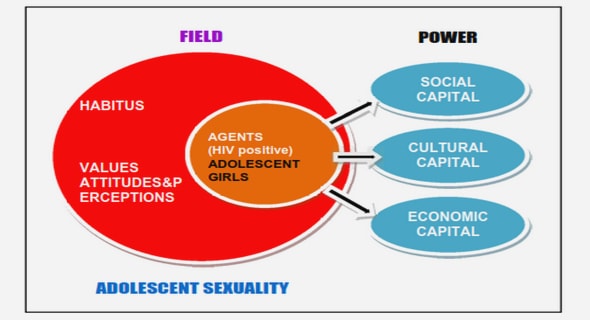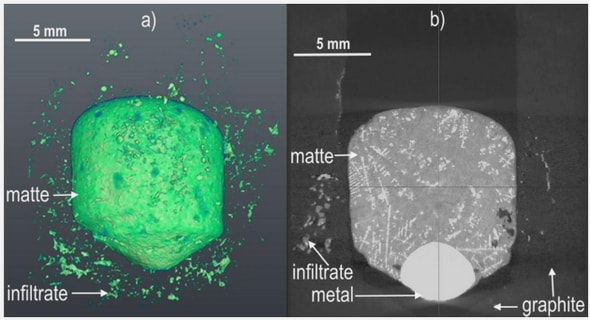Get Complete Project Material File(s) Now! »
String stability
Introduction
Arriving at one place safely in a certain period is the basic requirement of trans-portation. However, today’s road transportation is far from perfect. Incorrect driv-ing behaviors like drunken driving, fatigue driving and speeding are thought to be the main reasons for road accidents which on one hand cause injury, death, and property damage, on the other hand make vehicles keep larger distance from each other, thus the road capacity is not made full use of. Moreover, congestion caused by incorrect driving behaviors, accidents, improper signal timing have become a global phenomenon which has economically and ecologically negative effects, so that people have to spend more time on road and more fuel is consumed, which leads to more pollution.
More efficient, better space utilization and elimination of human error, self-driving or semi self-driving car developed by Google and automobile manufac-turers all over the world is a potentially revolutionizing technology to solve these problems [120]. However, the intelligence of individual vehicles does not represent the intelligence of the whole transportation system.
A completely different concept proposed by the California PATH Program, is vehicle « platoon », where the vehicles travel together with a close separation [127]. String stability is an important goal to be achieved in (C)ACC system design [95]. A platoon of vehicles is called string stable only if disturbances propagated from the leading vehicle to the rest of the platoon can be attenuated [117]. As opposed to conventional stability notions for dynamical systems, which are basically con-cerned with the evolution of system states over time, string stability focuses on the propagation of system responses along a cascade of systems. Several approaches exist regarding string stability, as reviewed below.
Previous research
Probably the most formal approach is based on Lyapunov stability, of which [143] provides an early description, comprehensively formalized in [152]. In this approach, the notion of Lyapunov stability is employed, focusing on initial condition perturbations. Consequently, string stability is interpreted as asymptotic stability of interconnected systems [29]. Recently, new results appeared in [75], regarding a one-vehicle lookahead topology in a homogeneous vehicle platoon. In this brief, the response to an initial condition perturbation of a single vehicle in the platoon is considered, thereby conserving the disturbance-propagation idea behind string stability. The drawback of this approach, however, is that only this special case is re-garded, ignoring the effect of initial condition perturbations of other vehicles in the platoon, as well as the effect of external disturbances to the interconnected system. Consequently, the practical relevance of this approach is limited, since external dis-turbances, such as velocity variations of the first vehicle in a platoon, are of utmost importance in practice. The perspective of infinite-length strings of interconnected systems [27] also gave rise to a notion of string stability, described in [93] in the context of a centralized control scheme and in [23] for a decentralized controller. Various applications regarding interconnected systems are reported in [8] and [83], whereas [7] and [27] provide extensive analyzes of the system properties. In this approach, the system model is formulated in the state space and subsequently transformed using the bilateral Z-transform. The Z-transform is executed over the vehicle index instead of over (discrete) time, resulting in a model formulated in the « discrete spatial frequency » domain [7], related to the subsystem index, as well as in the continuous-time domain. String stability can then be assessed by inspecting the eigenvalues of the resulting state matrix as a function of the spatial frequency. Unfortunately, the stability properties of finite-length strings, being practically rel-evant, might not converge to those of infinite-length strings as length increases. This can be understood intuitively by recognizing that in a finite-length platoon, there will always be a first and a last vehicle, whose dynamics may significantly differ from those of the other vehicles in the platoon, depending on the controller topology. Consequently, the infinite-length platoon model does not always serve as a useful paradigm for a finite length platoon as it becomes increasingly long [27].
The most important macroscopic behaviors of ACC vehicles is string stability. Such stability has been first recognized by D. Swaroop [155]. The string stability of a string of vehicles refers to a property in which spacing errors are guaranteed not to amplify as they propagate towards the tail of the string [154, 140]. This property ensures that any spacing error present at the head of the string does not amplify into a large error at the tail of the string. A general method to evaluate string stability is to examine the transfer function from the spacing error of the proceeding vehicle to that of the following vehicle. If the infinite norm of this transfer function is less than 1, string stability is ensured [153, 169].
For an interconnected system, such as a platoon of automated vehicles, stability of each component system itself is not sufficient to guarantee a certain level of performance, such as the boundedness of the spacing errors for all the vehicles. This is reasonable because our research object is a string of vehicles instead of only one vehicle. Therefore, besides the individual stability of each vehicle, another stability criterion known as the string stability is also required [62, 125]. Finally, a performance-oriented approach for string stability is frequently adopted, since this appears to directly offer tools for controller design for linear cas-caded systems. This approach is employed for the control of a vehicle platoon with and without lead vehicle information in [144], whereas [129] and [104] apply inter-vehicle communication to obtain information of the preceding vehicle. In [149], a decentralized optimal controller is designed by decoupling the interconnected sys-tems using the so-called inclusion principle, and in [72], optimal decentralized con-trol is pursued by means of nonidentical controllers. Furthermore, [94] extensively investigated the limitations on performance, whereas in [47], a controller design methodology was presented. Finally, in [19] the performance-oriented approach is adopted to investigate a warning system for preventing head-tail collisions in mixed traffic.
Definition of string stability
In the performance-oriented approach, string stability is characterized by the am-plification in upstream direction of either distance error, velocity, or acceleration, the specific choice depending on the design requirements at hand.
A simple scenario can be used to explain the string stability, illustrated in Figure. 2.1. In this figure, a platoon of five vehicles, from left to right, is taking a brake action. The leading vehicle is denoted as 1st while the last vehicle is denoted as 5th. In the figure above, a speed vs. time coordinate graph for each of the five vehicles is shown. As time goes by, the leading vehicle decelerates linearly and we can see different response of the following vehicles in the platoon depending on whether the platoon is string stable or not. In Figure. 2.1(a), the vehicle platoon is string stable: the disturbance of the brake action of the leading vehicle is not amplified through the following vehicles and the deceleration of following vehicles is smooth with slight fluctuation of the speed. In Figure. 2.1(b), the platoon is considered not string stable (string unstable): the following vehicles decelerate even more than the leading vehicle. Though finally, the velocities of the following vehicles approach the leading vehicle’s velocity, their response fluctuate significantly. Therefore, when velocity of vehicles fluctuates, the distance between consecutive vehicles is also suf-fering from great fluctuation. As a result, rear-end collisions between vehicles are more likely to taken place.
Table of contents :
1 Introduction to ITS
1.1 General traffic situation
1.2 Intelligent Transportation Systems
1.2.1 Definition of ITS
1.2.2 ITS applications
1.2.3 ITS benefits
1.2.4 Previous researches
1.3 Intelligent vehicle
1.4 Adaptive Cruise Control
1.4.1 Evolution: from autonomous to cooperative
1.4.2 Development of ACC
1.4.3 Related work in CACC
1.5 Vehicle Ad hoc networks
1.6 Machine Learning
1.7 Conclusion
2 String stability and Markov decision process
2.1 String stability
2.1.1 Introduction
2.1.2 Previous research
2.2 Markov Decision Processes
2.3 Policies and Value Functions
2.4 Dynamic Programming: Model-Based Algorithms
2.4.1 Policy Iteration
2.4.2 Value Iteration
2.5 Reinforcement Learning: Model-Free Algorithms
2.5.1 Objectives of Reinforcement Learning
2.5.2 Monte Carlo Methods
2.5.3 Temporal Difference Methods
2.6 Conclusion
3 CACC system design
3.1 Introduction
3.2 Problem formulation
3.2.1 Architecture of longitudinal control
3.2.2 Design objectives
3.3 CACC controller design
3.3.1 Constant Time Headway spacing policy
3.3.2 Multiple V2V CACC system
3.3.3 System Response Model
3.3.4 TVACACC diagram
3.4 String stability analysis
3.4.1 String stability of TVACACC
3.4.2 Comparison of ACC, CACC AND TVACACC
3.5 Simulation tests
3.5.1 Comparison of ACC CACC and TVACACC
3.5.2 Increased transmission delay
3.6 Conclusion
4 Degraded CACC system design
4.1 Introduction
4.2 Transmission degradation
4.3 Degradation of CACC
4.3.1 Estimation of acceleration
4.3.2 DTVACACC
4.3.3 String stability analysis
4.3.4 Model switch strategy
4.4 Simulation
4.5 Conclusion
5 Reinforcement Learning approach for CACC
5.1 Introduction
5.2 Related Work
5.3 Neural Network Model
5.3.1 Backpropagation Algorithm
5.4 Model-Free Reinforcement Learning Method
5.5 CACC based on Q-Learning
5.5.1 State and Action Spaces
5.5.2 Reward Function
5.5.3 The Stochastic Control Policy
5.5.4 State-Action Value Iteration
5.5.5 Algorithm
5.6 Experimental Results
5.7 Conclusion
Bibliography


